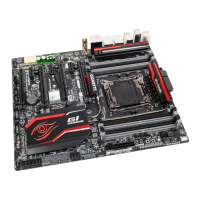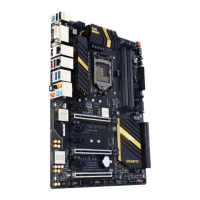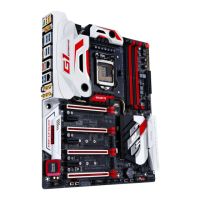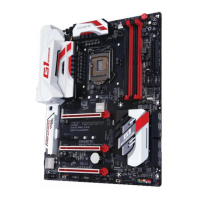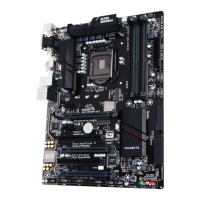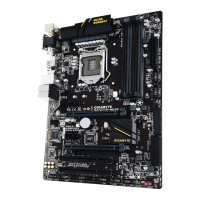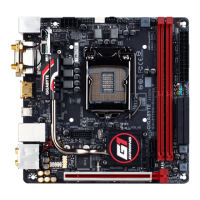- 22 -Hardware Installation
1-7 Back Panel Connectors
USB 2.0/1.1 Port
TheUSBportsupportstheUSB2.0/1.1specication.UsethisportforUSBdevices.
PS/2 Keyboard/Mouse Port
Use this port to connect a PS/2 mouse or keyboard.
DVI-D Port
(Note)
TheDVI-DportconformstotheDVI-Dspecicationandsupportsamaximumresolutionof1920x1200@60Hz
(theactualresolutionssupporteddependonthemonitorbeingused).ConnectamonitorthatsupportsDVI-D
connection to this port.
OCPSW Button
This button allows you to use your smart phone/tablet device to overclock or monitor your computer
withtheGIGABYTEHWOCapp.Refertotheinstructionson usingthisfeatureinChapter5,"Using
GIGABYTE HW OC."
Mini-DisplayPort
DisplayPort delivers high quality digital imaging and audio, supporting bi-directional audio transmission. Display-
Port can support both DPCP and HDCP content protection mechanisms. You can use this port to connect your
Mini-DisplayPort-supported monitor. The maximum supported resolution is 4096x2304@60 Hz, but the actual
resolutions supported are dependent on the monitor being used.
USB 3.0/2.0 Port
TheUSB3.0portsupportstheUSB3.0specicationandiscompatibletotheUSB2.0/1.1specication.
Use this port for USB devices.
HDMI Port
The HDMI port is HDCP compliant and supports Dolby True HD and DTS HD Mas-
ter Audio formats. It also supports up to 192 KHz/24bit 8-channel LPCM audio out-
put. You can use this port to connect your HDMI-supported monitor. The maximum supported resolution is
4096x2160@24 Hz, but the actual resolutions supported are dependent on the monitor being used.
• Tosetupatriple-displayconguration,youmustinstallmotherboarddriversintheoperatingsystemrst.
• After installing the HDMI/Mini-DisplayPort device, make sure to set the default sound playback device
toHDMI/DisplayPort.(Theitemnamemaydifferdependingonyouroperatingsystem.)
In Windows 8.1, select Apps>Control Panel>Hardware and
Sound>Sound>Playback, set Intel(R) DisplayAudio to the
default playback device.
(Note) TheDVI-DportdoesnotsupportD-Subconnection
by adapter.
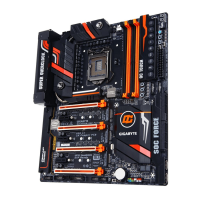
